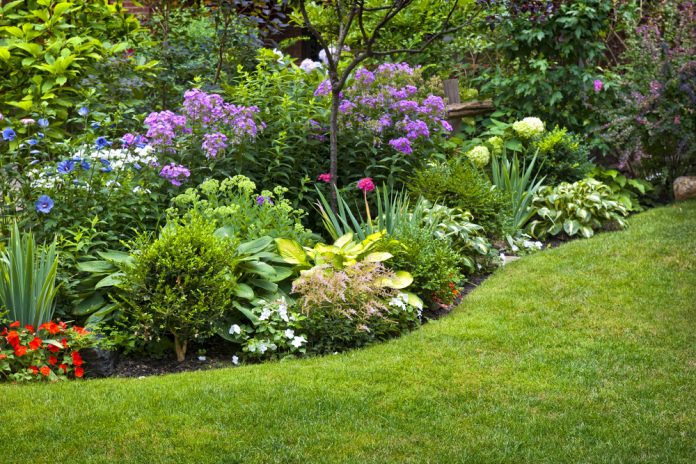Landscape fabric is a dream solution for gardeners. Installing this fabric is ideal as it’s comfortable and requires minimal effort in cleaning and maintenance. Most importantly, this fabric is weed-resistant. There are low chances of landscape fabric catching weeds. As such, you can avoid the hassles of removing weeds. The popularity of this weed barrier fabric has grown immensely.
However, nothing under the sun is perfect. There are downsides of landscape fabrics as well. Before installing this fabric, be well aware of the pros and cons. Here are the critical points to keep in mind.
Functions and Cost of Landscape Fabric
Landscape fabric features woven fabric that comes with perforations on the cloth. It allows air and water flow to reach the plant root. Some brands offer fabrics that come with UV protection — this enhances lifespan, making them more durable. If you install this fabric over a weed-free bed, it will act as a layer, preventing weeds from germinating below. For the financial aspect, it is likely to vary based on multiple factors such as the thickness of the fabric and its brand.
The installation cost varies, depending on the provider handling this task. By approaching a reliable and reputed service provider, you can expect quality services coming at a mass-level price. You can sometimes negotiate the cost with the proposed installer. Likewise, collect quotes from several providers. Finalize a deal with the party that charges the most reasonable cost. Do not ignore the quality of services.
What Are the Benefits of Using Landscape Fabric?
What are the key advantages of using landscape fabrics?
- They prevents rocks and inorganic mulches from sinking deeper into the soil.
- Landscape fabric effectively prevents weeds from sprouting, and consequentially the spreading of weeds across the garden. It minimizes the need for herbicidal weed control activities.
- If used in sloping areas, it offers an effective solution for the issue of erosion.
- It contributes to moisture retention of the soil, boosting its health and fertility.
What Are the Significant Downsides of Using Landscape Fabric?
The significant downsides of using landscape fabric are as follows:
- When using landscape fabric for a long time, it results in the clogging of the perforations on the cloth. This prevents an adequate volume of water and air from reaching the plant root. Eventually it results in the degradation of plant health.
- Landscape fabric prevents the development of earthworms. This results in a drastic degradation of the soil quality.
- The fabric prevents the biodegrading of organic materials, resulting in unhealthy soil structure.
- If the fabric is used for a prolonged time period, this can trigger the development of weeds along the covered areas. It will increase the need for cleaning, eventually resulting in an escalation of costs in this regard.
- The installation of landscape fabric is a time-consuming and challenging activity, especially if you wish to install it around existing crops.
Landscape Fabric Is Not a Permanent Solution
Even though there are tons of benefits, its durability is the most crucial issue. Note that these fabrics will not last forever. Long-term use is likely to harm the plant’s health and the soil. This fabric is ideally suited for areas around the driveway and the mailbox. Considerate placement of this fabric in other regions may produce adequate results. Before installing this fabric, give proper consideration to this factor.
What Are the Alternatives to Landscape Fabric?
Considering the downsides, you may decide not to install landscape fabric in your garden. What are the alternatives?
- Ground Covers: As a great substitute to landscape fabric, you can opt for ground covers in your garden. They prevent the development of weeds without triggering problems for the existing or future plants in the garden.
- Organic Mulches: Place wood chips, bark chips, hops, and cottonseed layered at 3-4 inches. They make an excellent alternative to landscape fabric, offering effective weed control.
- Inorganic Mulches: Gravel, crushed rock, and stones are inorganic alternatives to landscape fabric. They’re reasonably priced and you can avoid the hardships of installing landscape fabric. Recycled rubber tires and recycled glass are other items that you can consider in this context.
Find a Home-Based Business to Start-Up >>> Hundreds of Business Listings.
















































